It is said that everything in the Universe is constantly communicating to us and we can hear their songs and stories if only we dare lend an ear and listen. Listening is both an external and internal process. Not only we listen to the sounds that our physical ears can hear, we also listen with our hearts. The unspoken stories are as important as the stories that are spoken.
We are listening creatures. I’d say that listening is a skill deeply ingrained in our DNA. We listen practically all the time. We listen to the noise of our neighbor singing karaoke in the unholy hours of the night. We listen to the voice of our well-intentioned parents who tells us what to do with our lives as parents are believed to know what’s best for their children. We listen to what society expects us to be and not to be. We listen to our fears and passions that shape the way we live our lives.
While the act of listening and being listened to can be deeply healing and transforming for both the listener and the one being listened to, some stories we hear can be equally disempowering too. Sometimes the stories we hear can leave us feeling devastated, overwhelmed, and fearful. As we float in the sea of voices (and noises) that constantly fight for our attention, it is easy to be drowned by them and feel helpless. But the art of listening is more than just a passive act of receiving information. Listening also requires a response. As I ponder on the whole subject of listening I ask myself three fundamental questions: “To whom do I listen to?”, “Which parts of myself do I need to listen to more?“, and “How do I choose to respond to what I’ve listened to?”
To listen is a gift. To listen is an invitation. To listen is a choice.
The gathering of indigenous elders, babaylans and babaylan-inspired Filipino held last July 1-7, 2015 in Bunawan, Agusan del Sur entitled PAMATI: Listen to the Water and Songs of Ancestors was born out of response as singer/chanter/scholar Grace Nono made a conscious decision to heed the call of the ancestors. Fittingly called PAMATI, a Visayan word for listen, it was seven wonderful days spent in mutual listening both in the stories shared verbally as well as the stories that continue to unfold in our loob. In her words Grace describes the event, “PAMATI proceeds as a teasing out of voices, particularly of the silenced, and of empathetic listening to get to know each other as Kapwa and as members of specific communities, ancestries, and natural environments.”

As with many callings in life, it was no easy task to pull this event together considering the short period of time of 6 months to prepare for the event, the limited man power and human resources available, and the seemingly lack of funds to cover the foreseen expenses such as building of infrastructures, travel costs of invited resource persons, and babaylan honorarium to name a few. But despite the many hurdles, struggles and challenges (and Maalaala Mo Kaya moments — you know who you are!) faced by the organizers, the success of Pamati is a testament not only to the power of the bayanihan spirit among Filipinos but also in the powerful partnership we can harness with the invisible Spiritual World of the Diwatas and ancestors if we are humble enough to listen and co-create with Spirit.

For this I would like to express my gratitude to the Creator, all our ancestors, diwatas and abyans (spirit helpers) for without your blessings, we will not be able to make this event possible. May you continue to bless and guide each one of us as we continue to walk our sacred paths.
I’d also like to take this opportunity to thank Grace Nono of the Tao Foundation for Culture and Arts for the love, commitment, and the courage to listen to the invitation of the ancestors. Thank you for opening your ancestral home to us and being a bridge between two worlds. Thank you for being an indigenous grace to us all.
Many thanks to Minifred Gavino for her Buhay Babaylan Lecture-Ritual Series initiative which started a couple of years ago for being instrumental in connecting GINHAWA and Grace Nono. You’ve helped plant the seeds of the diwang babaylan and because of your initial efforts, we are now celebrating the joyous fruits of your labor.
I thank all our partner organizations who helped gave birth to this wonderful initiative namely Center for Babaylan Studies (CFBS), Institute of Spirituality in Asia (ISA), Asian Social Institute (ASI), and GINHAWA.
Thank you to the indigenous elders and babaylans (mumbaki, patutunong, andadawak, munfuni) present:
- Kalinga – Ernesto Tumapang and Andadawak Gannay Ammakiw
- Ifugao (based in Ohio) – Mumbakki Lagitan ‘Mamerto’ Tindongan
- Bontoc – Arlene Natocyad
- Panay-Bukidnon – Baylan Epifania and Cenia Lastrilla
- Agusan-Manobo La Paz – Baylan Undin and Baylan Julianna
- Agusan-Manobo Loreto – Datu Boyet Reyes
- South Cotabato T’boli – Tau M’tunbu Maban and Apo Danilo
- Maguindanao – Patutunong Faisal Monal and Abraham Abdulla
- Zamboanga Subanen – Juanito Baoc and Fernandita Baoc
- Mt. Apo – Biting
Thank you to our distinguished resource persons namely Dr. Alice Magos and Fr. Albert Alejo (aka Paring Bert), as well as to the tribe coordinators that also served as interpreters namely Robilyn Coguit for the Manobo group, Fr. Joseph Audiencia for the Zamboanga Subanen group, and Myrna Pula for the South Cotabato T’boli group.
Deep appreciation and gratitude to all the volunteers, to the general event manager Rhodora “Manang Diding” Toyong, to the registration head Ate Glo, and to the kitchen staffs led by Manang Arcing for taking good care of all of us during our stay.
A warm applause goes to our three talented photographers/videographers Mark Lester Valle and Willie Apa of the Habi Collective and Antonio Jamora. Thank you for immortalizing the spirit of PAMATI through your wonderful photographs, and videos.
Hats off to Claire Madarang for her amazing documentation skills and for taking care of the GINHAWA team’s flight bookings and travel insurance.
Special thanks to Donna Vergara, Lily Mendoza, Leah Tolientino, and Grace Nono for facilitating the plenary sessions and to Fr. Gerry Sabado (aka the new father of languages) for the outstanding translation in four different languages/dialect namely Ilokano, Tagalog, Cebuano and English.
And last but not the least, thanks to all 48 beautiful individuals (aka the chosen ones) for listening to the call and accepting the invitation to co-create and participate. Many have been called and many have expressed interest to join but you were the ones who made it, hence, the chosen ones.
It was my first time on Mindanao soil and I feel so blessed to have spent my first trip to Mindanao in the land (and waters) of Agusan del Sur. It was no ordinary trip for sure with memories I will forever treasure in my heart. How can I forget the fascinating stories about the abyans? The time when the earth shook on the exact moment we joined together in prayer? The enchanted Agusan marsh with its rich stories about crocodiles and unseen beings? The rituals and mediumships that I personally witnessed where no recording devices were allowed to pry? The songs and dances that moved my body and spirit? Our dear friend Claire’s dramatic descent to the lower world of cemented floor where she kissed the earth and got her left leg injured? And the new (and not so new) friendships that were forged and deepened?
Originally, PAMATI was intended to be a 12-day event. But due to financial and time constraints organizers had to scale it down to 7 days. This is my personal attempt to capture the gist of our day to day encounter by narrating the major highlights of each day plus 2 extra days of my extended stay.
Day 1
It was a fair Wednesday morning when we arrived at Bancasi Airport in Butuan. We were welcomed by volunteers JP and Saddam just outside the terminal and they ushered us to a van that will take us to Balay Agusan in Bunawan. I still can’t believe up to this day how we managed to fit inside the van considering the bulk and sizes of our luggages from Manila. It was a 3-hour drive from the airport to Bunawan. We reached Balay Agusan before noon time. The local parish priest conducted a blessing for the newly constructed buildings. We officially opened the program by saying prayers from the Christian, Islam, and babaylan traditions. Baylan Undin led a short ritual to harmonize the energies of the different baylans present. In the afternoon, the group attended a courtesy call. Some of us enjoyed the evening with a relaxing massage by Bunawan’s finest hilots.


Traditional house builders started construction a few days before our arrival to make sure it will be finished by the final day of the program.

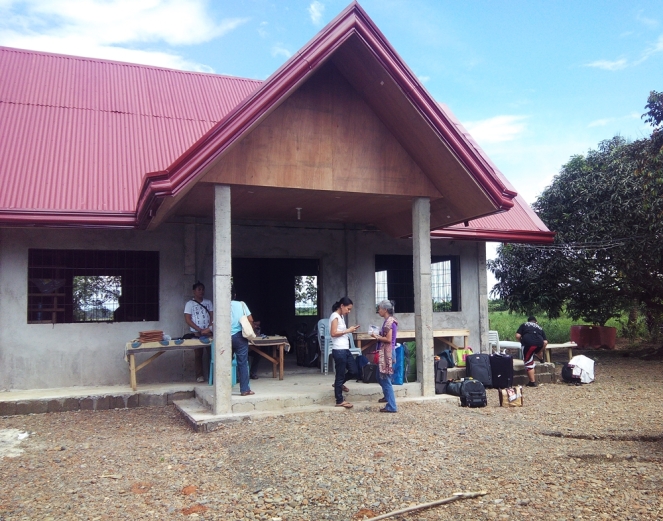

Day 2
We opened the day with an interfaith prayer. Most participants have already arrived so we took turns introducing ourselves one by one and the organizations we represent. The babaylans and indigenous elders shared something about themselves too. As the gorgeous full moon made it’s appearance in the sky, we were graced by the presence of spirit friends who danced and chanted with us through human vessels. Enchanting sounds from the kulintang as well as babaylan songs filled the air as each one of us witnessed something magical happen right before our very own eyes. After dinner, the T’boli evening market was officially opened and T’boli crafts were showcased and feasted upon by the participants.


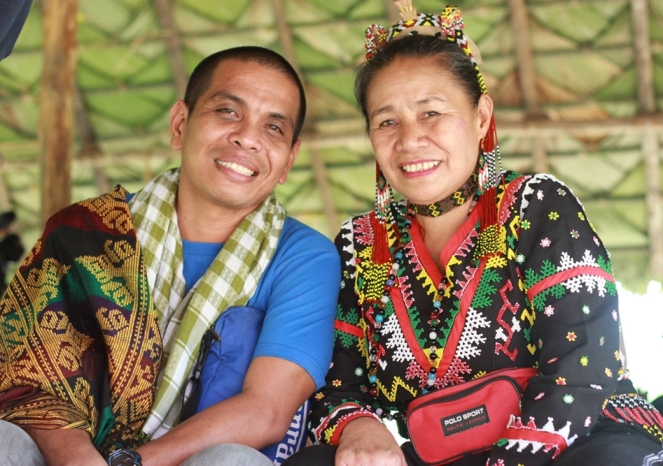
Day 3
We opened the third day again with an interfaith prayer. The group was divided into two: indigenous elders and student-seekers. Within each group, participants shared their thoughts and feelings for the past couple of days. Moments later, the earth shook in the very exact moment our elders and babaylans joined together in prayer. It felt as if Mother Earth wanted us to know that she indeed hears us all. I checked the news and confirmed an intensity 5 earthquake detected by Phivolcs in Agusan del Sur and nearby areas. Late afternoon, the group visited the Agusan del Sur State College of Agriculture and Technology to showcase the beauty and richness of the indigenous culture to students.



Day 4
We opened the day again with an interfaith prayer. The group sharing among indigenous elders and student-seekers continued. In the evening a series of rituals and prayers were conducted as part of the group’s preparation for the trip to the Agusan marsh the next day. Another magical evening.
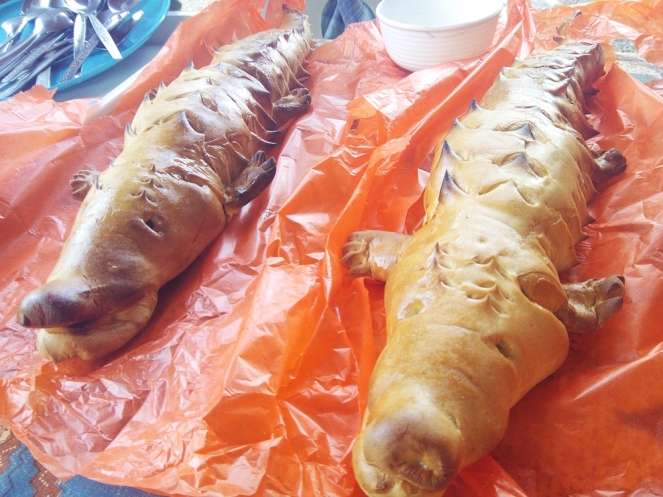


Day 5
The day that most of us have been waiting for has come. Everybody woke up earlier than usual. The group left Balay Agusan early morning and headed to the ferry terminal where boats are waiting to take us to the Agusan marsh. It was around 3-hours travel by water. Once we entered the marsh, we were greeted by floating houses and clusters of water hyacinth and the waters are unusually turbulent due to an approaching typhoon. For a moment I felt like a priestess of Avalon and instead of parting the mist, I imagined raising my arms in the air and part the clusters of water hyacinths to give way to our boat as we enter enchanted and elusive Agusan marsh territory. Minutes later, we reached Datu Boyet’s place (Boyet is our host) and we were welcomed by a group of singing and clapping women. They truly prepared for our visit. After eating lunch, some of us went for a boat ride to explore the surrounding areas before sundown. In the evening, Boyet shared stories of his people, of crocodiles (Lolong has an interesting insider-story) and of the enchanted Agusan marsh.






Day 6
We continued to explore the surrounding area by riding small bangkas. After breakfast, the group bid farewell and goodbyes as we begin our journey back to Balay Agusan. Shortly after arriving at Balay Agusan, the elders and babaylans had a consultation-meeting about what knowledge and practices can be transmitted and cannot be transmitted to student-seekers. There was a short film viewing in the evening on Schooling the World: The White Man’s Last Burden. And close to midnight, just as we thought the day was over, Claire had an accident and fell down from a flight of stairs which put the entire Balay Agusan household in a temporary state of emergency. Claire was rushed to the hospital with Rem, Yeyette, and Fr. Gerry on her side. Thanks to the combined prayers of the group and my FlorAlive End2Panic Remedy, which came in handy, Rem made it through the night emotionally.

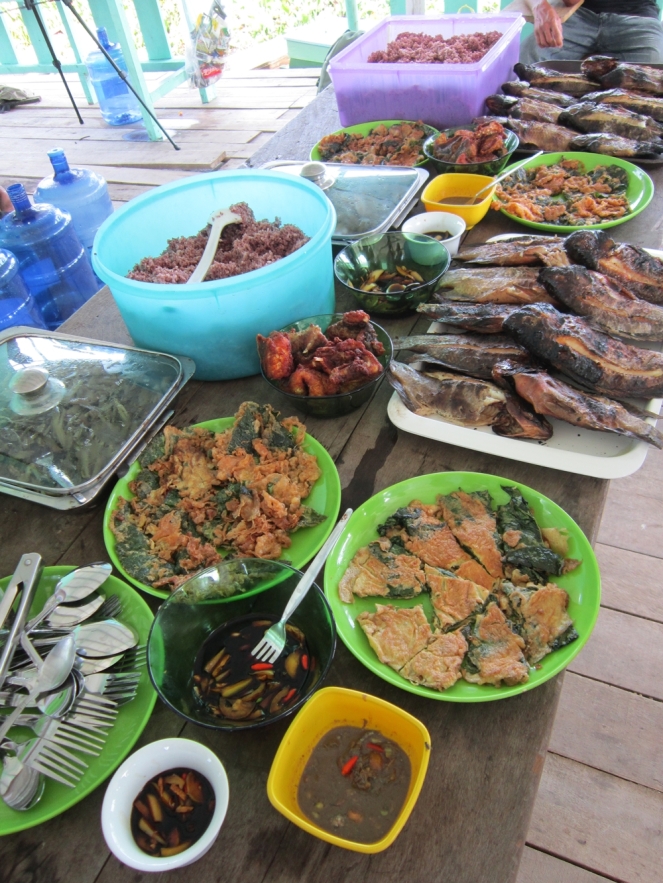






Day 7
Claire was brought back to Balay Agusan by the ambulance early morning and everyone surrounded her with good intentions and prayer. Claire asked Baylan Maban of the T’boli to say some healing prayers for her. Moments later, Claire was brought back to the hospital for an operation. By late morning, the group gathered around the Tinandasan for the house blessing and prayers led by Baylan Undin of the Manobo tribe. Guests arrived shortly after the ritual for the finale program which showcased the gifts and talents of our indigenous elders and babaylans. The program concluded with a community dancing led by Arlene Natocyad of Bontoc. A sumptuous meal was served as part of the celebration. After the celebration, other participants started to leave and we bid our farewells and goodbyes.

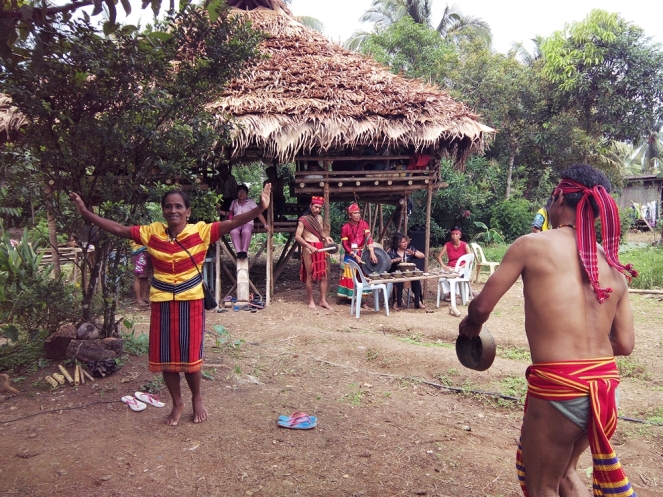







Day 8
Fr. Joseph, former parish priest in Agusan of six years, led the remainder of the group to a mini day expedition in the neighboring towns. We visited the PASAKK headquarters which is only a couple of blocks away from Balay Agusan. We then proceeded to the Manobo school where students graced us with a wonderful indigenous-inspired song and dance number. Shortly, we traveled to see the place where Lolong the Crocodile was caught and housed when it was still alive. After lunch, we went to visit the Diocese of Butuan where we enjoyed the sight of many fruit-bearing trees and a very delicious merienda of spanish bread (the most delicious spanish bread I ever tasted so far) and fresh calamansi juice. On our way home, we briefly dropped by the hospital to check on Claire who just came out of the operating room.




Day 9
At the break of dawn, the small group of remaining participants joined Father Joseph to a nearby hotspring. It was a 10 minute drive from Balay Agusan. If I learned about the hotspring earlier, I would have spent my mornings here for a 20-minute relaxing bath. As expected the water is hot! Luckily we had the hotspring all to ourselves. After an hour of shedding our epidermis, We went home just in time for a second breakfast. You know in the province it is normal to have breakfast twice. I started packing my things as I and Remi head off to Butuan for our return flight to Manila.

I enjoyed so much this whole PAMATI experience! Looking forward to the next encounter.




You must be logged in to post a comment.